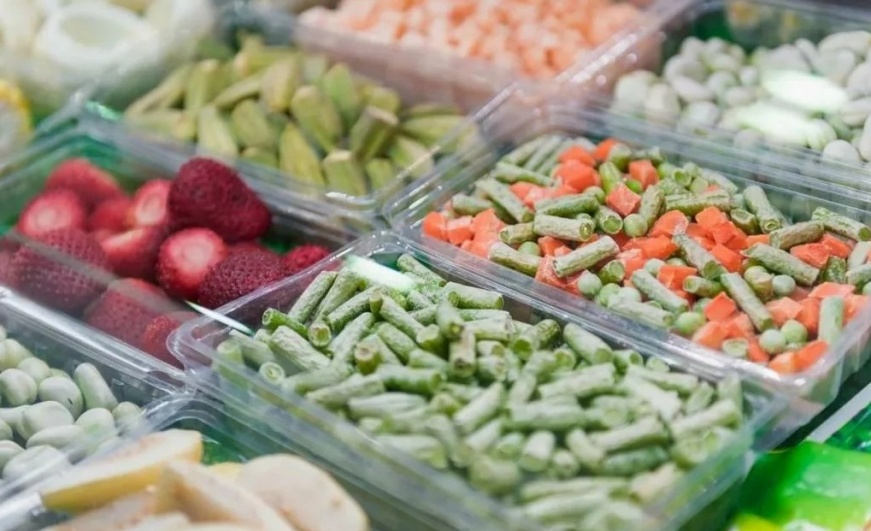With growing environmental concerns around the large amounts of plastic waste, researchers are exploring innovative solutions for sustainable food packaging. One emerging concept gaining traction is the idea of edible packaging – packaging materials that can be safely eaten along with the food product.
What is Edible Packaging?
Edible packaging refers to packaging materials derived from edible plants, fruits or food processing byproducts that can act as protective casings for food products while also being consumed along with the product. Some key characteristics of edible packaging include:
– Made from materials generally recognized as safe (GRAS) by regulatory bodies like FDA in the US. Common materials include proteins, polysaccharides, lipids etc. extracted from plants/fruits.
– Provides protection and extends shelf-life of packaged food products similar to conventional plastic/paper packaging materials.
– Completely edible packaging and digestible with the food product without causing any health issues.
– May or may not have distinctive taste/flavor but should not override taste of packaged food product.
– Preferably, produced from renewable/sustainable agriculture feedstock and food processing byproducts/wastes.
Types of Edible Packaging Materials
Researchers have developed several innovative types of edible packaging materials. Some of the commonly studied ones are:
– Protein-based films: Materials like collagen, gelatin, whey and casein proteins extracted from animals and dairy have been turned into edible films providing moisture and grease resistance.
– Polysaccharide films: Natural polysaccharides like alginate from seaweed, carrageenan from seaweed, chitosan from crustacean shells have been used to form moisture barrier films. Starch and cellulose from plants are other sources.
– Lipid-based coatings: Beeswax, carnauba wax, shellac wax have been explored for formulations providing grease resistance and extending shelf-life of oily, fatty or greasy foods.
– Fruit/Plant Byproduct Films: Fibers, pectin and hemicellulose extracted from agricultural/food industry byproducts like sugar beet pulp, citrus peel, berry pomace have been turned into edible casings.
Benefits of Edible Packaging
Use of edible packaging provides several environmental and economic benefits compared to conventional plastic packaging:
– Sustainable and renewable: Many edible packaging materials are plant-based and derived from agricultural/food industry byproducts reducing agricultural and plastic waste.
– Biodegradable: Being organic materials, they can easily break down in soil or other disposal methods unlike plastics causing less environmental pollution.
– Nutritive value: Some formulations may provide additional nutritional value by contribution of protein, fiber, minerals etc. consumed along with food.
– Supply chain efficiency: Edible wrappings eliminate need for disposal of separated packaging waste, simplifying logistics and reducing costs.
– Revenue generator: Byproducts previously treated as waste can be upcycled as packaging generating additional revenue streams for industries.
– Brand promotion: Promotes brand image boosting consumer appeal of sustainable and environmentally responsible practices.
Challenges in Adoption
While edible packaging holds exciting potential, certain technological and regulatory challenges must be addressed for widespread commercial adoption:
– Mechanical properties: Achieving mechanical strength at par with plastics to withstand logistics and ensure no damage to packaged goods remains a challenge. blends.
– Shelf-life extension: Maintaining microbial stability and extending shelf-life of packaged foods similar to conventional packaging requires further research.
– Sensory properties: Flavor, taste and appearance impact on packaged food needs optimization to avoid being distracting.
– Production costs: Initial capital costs for setting up production facilities may be higher until technologies attain necessary economies of scale.
– Regulatory approvals: Stringent food safety testing and approvals from organizations like FDA are required before commercial launch of any new food contact material.
– Consumer awareness: Mass awareness about concept, benefits and proper disposal methods needs creating through campaigns.
Research and Development
Significant research collaborations between academia, startups and industry are underway to address existing technological gaps. Focus areas include evaluating new biopolymer formulations and blends, techniques like thermal treatments, chemical modifications, compositing to enhance mechanical and barrier properties. Use of nano-materials, bio-inspired structures and anti-microbial additives as reinforcements are active fields. Federal grants support large-scale pilot production projects to demonstrate commercial feasibility. If challenges are successfully overcome, edible packaging is expected to revolutionize sustainable food packaging industry in the next decade.
*Note:
- Source: Coherent Market Insights, Public sources, Desk research
- We have leveraged AI tools to mine information and compile it




